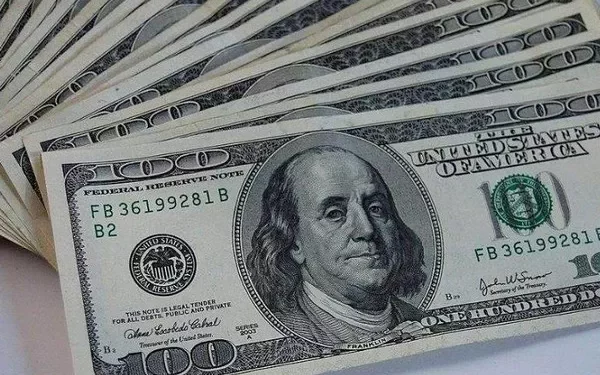The United States dollar, often referred to as the greenback, is one of the most recognized and widely used currencies in the world. Its ubiquity in global trade and finance has led many to wonder, “How many different dollar bills are there?” In this article, we will delve into the various denominations, designs, and historical variations of U.S. dollar bills to provide a comprehensive answer to this intriguing question.
Denominations of U.S. Dollar Bills
When pondering how many different dollar bills are there, it’s essential to start with an exploration of the various denominations in circulation. As of my knowledge cutoff date in September 2021, the United States has seven commonly used denominations of paper currency: $1, $2, $5, $10, $20, $50, and $100. Each denomination serves a specific purpose in daily transactions, with the $1 bill being the most common and the $100 bill being the highest in value. These denominations provide a range of options for individuals and businesses to conduct transactions efficiently.
How Many Different Dollar Bills Are There in Terms of Design?
The design of U.S. dollar bills is a fascinating aspect of currency production. Over the years, there have been multiple design variations, including changes in portraits, symbols, and security features. While the denominations remain consistent, the aesthetics and security features have evolved. To answer the question of how many different dollar bills are there in terms of design, we must examine the history of U.S. currency.
1. $1 Bill:
The $1 bill, featuring a portrait of George Washington, has seen several design changes over the years. Notably, the most recent redesign was introduced in 1963, featuring the Great Seal of the United States on the reverse side. While the basic design has remained consistent, these variations contribute to the diversity of $1 bills.
2. $2 Bill:
The $2 bill is relatively rare in circulation but is still considered legal tender. The design of the $2 bill showcases a portrait of Thomas Jefferson on the front and a depiction of the signing of the Declaration of Independence on the reverse. While the design has seen minor updates, the $2 bill remains a unique addition to the U.S. currency lineup.
3. $5 Bill:
The $5 bill is graced by a portrait of Abraham Lincoln on the front and features the Lincoln Memorial on the reverse. Throughout its history, this denomination has undergone design changes, primarily related to security features. These changes enhance the resilience of the $5 bill against counterfeiting.
4. $10 Bill:
The $10 bill showcases Alexander Hamilton on the front, and its reverse features an image of the U.S. Treasury Building. In recent years, there have been discussions about redesigning the $10 bill to include a prominent woman from American history, further adding to the diversity of U.S. currency designs.
5. $20 Bill:
The $20 bill is widely circulated and has undergone significant design changes. Andrew Jackson’s portrait graces the front, while the reverse features a depiction of the White House. In the coming years, the $20 bill is scheduled to undergo a redesign, with Harriet Tubman, a renowned abolitionist, set to replace Andrew Jackson, making it a noteworthy addition to the diverse lineup of U.S. dollar bills.
6. $50 Bill:
The $50 bill features Ulysses S. Grant on the front and the U.S. Capitol on the reverse. Like other denominations, it has experienced design updates primarily related to security enhancements.
7. $100 Bill:
The $100 bill, featuring Benjamin Franklin, is the highest denomination in common circulation. Its intricate design includes various security features, such as a 3D security ribbon and a color-shifting inkwell. This denomination is especially popular in international commerce.
Historical Variations of U.S. Dollar Bills
To truly understand how many different dollar bills are there, it’s essential to explore the historical variations that have existed over the years. While the denominations mentioned above remain constant, the United States has issued various series and types of currency that are no longer in circulation but are collected by numismatists and enthusiasts.
1. Large-Size Notes:
The early U.S. dollar bills, known as large-size notes, were issued from 1861 to 1928. These notes were significantly larger than modern currency and featured intricate designs, including portraits of historical figures, allegorical figures, and scenes from American history.
2. Silver Certificates:
Silver certificates were issued from 1878 to 1965 and could be redeemed for a specific amount of silver bullion. These certificates featured distinctive blue seals and serial numbers and added variety to the dollar bills in circulation.
3. Gold Certificates:
Gold certificates, issued from 1863 to 1933, were backed by a specific amount of gold held in the U.S. Treasury. These certificates featured ornate gold-colored designs, making them stand out from other denominations.
4. Federal Reserve Notes:
The modern U.S. dollar bills, known as Federal Reserve Notes, began circulation in 1914. These notes, issued by the Federal Reserve, replaced many of the earlier types of currency. They featured a standardized design and continue to be the primary form of paper currency in the United States.
Conclusion
In answering the question of how many different dollar bills are there, we find that there are seven common denominations of U.S. currency, each with its own unique design. However, when considering historical variations and collectible notes, the diversity of U.S. dollar bills becomes much more extensive. The ever-evolving nature of currency design ensures that there will always be something intriguing and distinctive about the money that flows through our daily lives. Whether it’s the iconic faces on the front of the bills or the security features that protect their value, U.S. dollar bills continue to capture the imagination of people around the world.
Related Topics:
Unlocking the Mystery: What Dollar Has the Highest Value?
What Happens If the Dollar Gets Stronger: A Comprehensive Overview
The Implications of a World Without the US Dollar



























